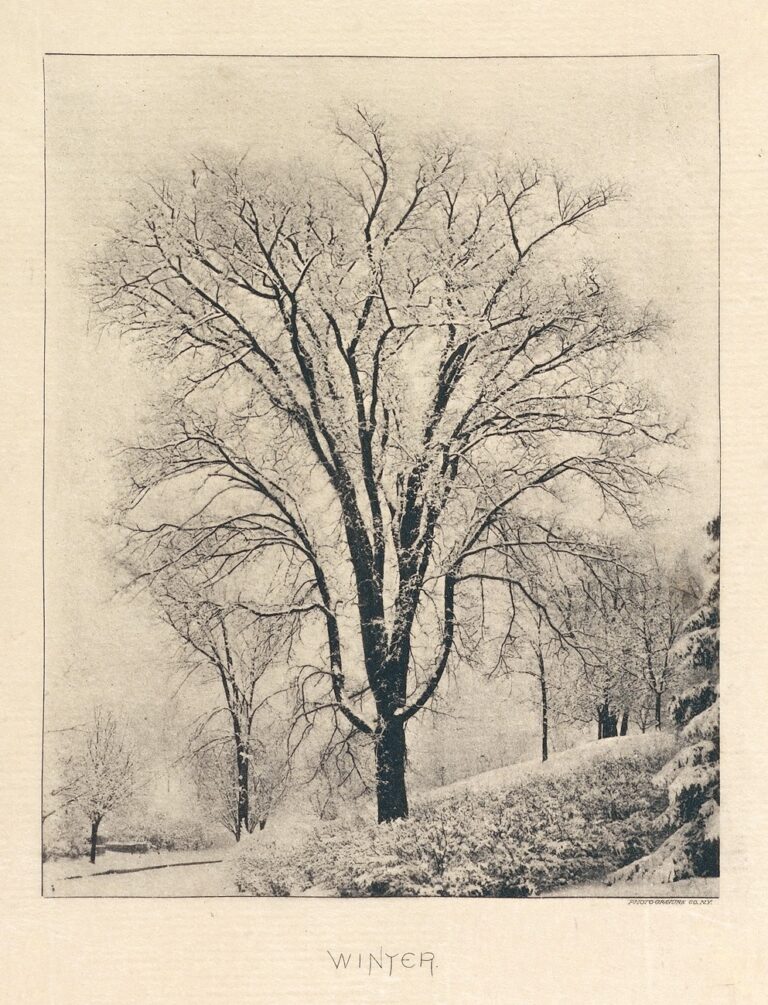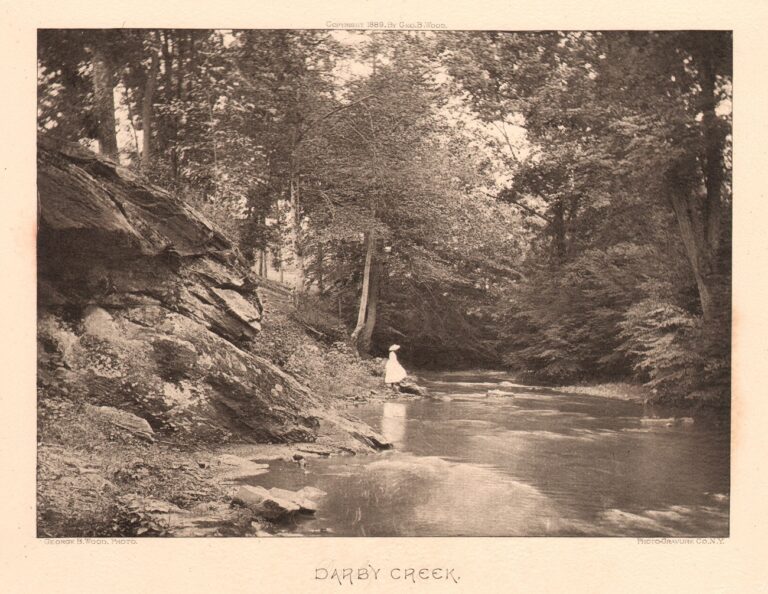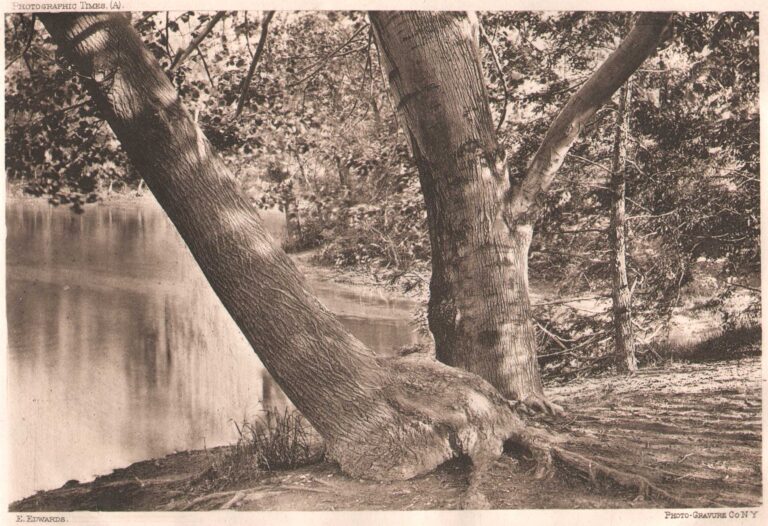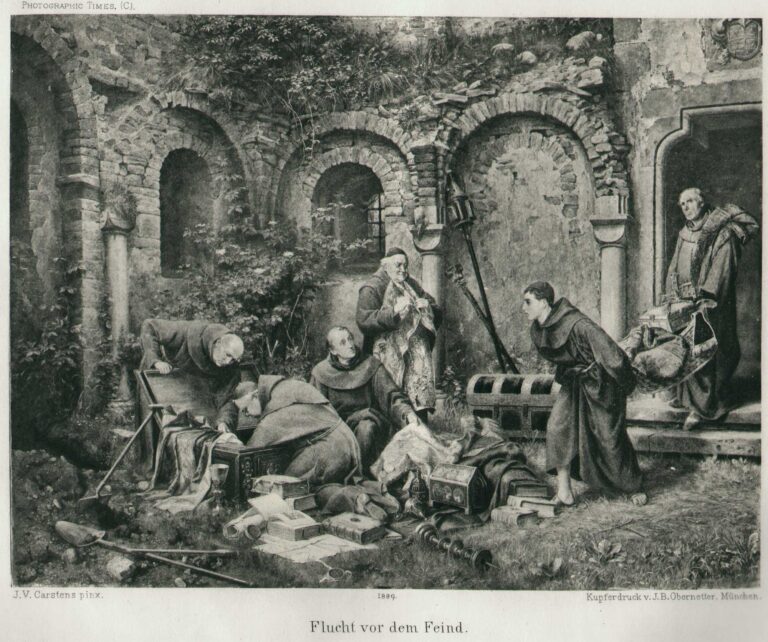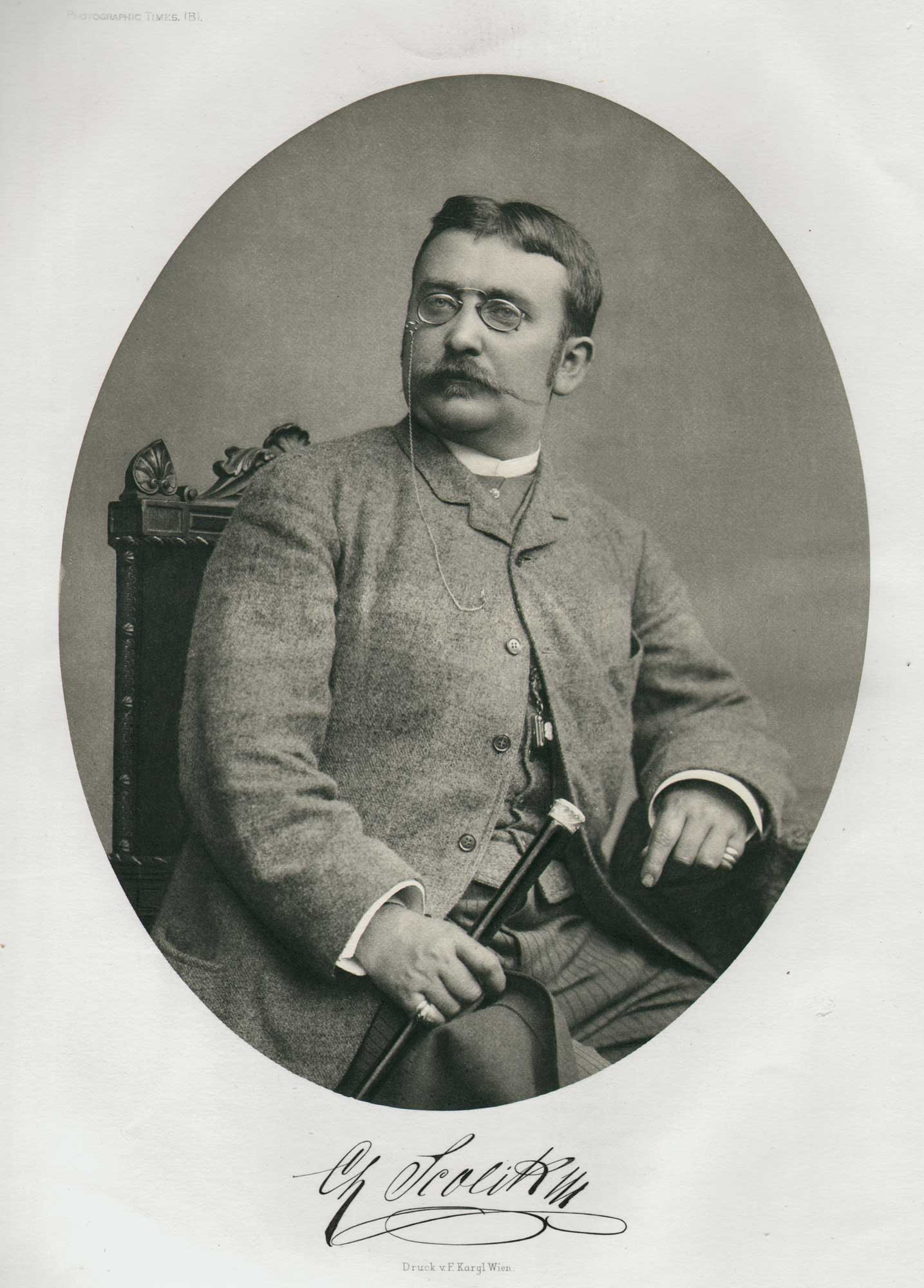
Charles Scolik
Editorial Comment for this plate:
Charles Scolik. (1854-1928)
THE subject of our illustration this week is well known to American photographers in general, and the readers of THE PHOTOGRAPHIC TIMES in particular; for he has contributed to these columns, in times past, articles that have been universally read with profit.* Charles Scolik, at present, is one of the leading photographic authorities on the continent of Europe. He is editor of the Photographische Rundschau, the organ of the Vienna Amateur Photographic Club; and has been associated with Dr. Frederick Mallman, in charge of the experimental photographic laboratory at Vienna. A brief sketch of Herr Scolik’s life will not be out place at this time.
Charles Scolik was born in Vienna, March 16, 1854. He early evinced a disposition for the study of chemistry and physics; when only thirteen years of age, leaving the jeweller to whom he had been apprenticed, to obtain a situation in a neighboring photographer’s atelier. This photographer was no other than Carl Wrabetz, now a delegate to the Austrian Reichstag. Young Scolik served Herr Wrabetz, as an apprentice, faithfully and intelligently, for some time; his master-at that time a young man -being an enthusiastic experimenter in our science. On completing his time of service, Charles Scolik found employment in various photographic establishments, at different times as printer, retoucher, &c., until we find him managing operator of a large gallery in the Hungarian town of Temesvar. In 1873, our subject travelled through Hungary, making photographs of the national costumes, on a commission from Herr Huerbach, for exhibition at the International Exhibition of Vienna. On completing this mission, other employment for a time did not offer itself, and Charles Scolik lived in great want for some time.
Later, he returned to his friend and former teacher, Herr Wrabetz, in Vienna, and soon became partner of the celebrated painter, Franz Panzer. Here he made portrait studies for artists’ purposes; but this occupation did not give him the time he desired for experimental work in scientific photography, and he gave up his art-work for a position as superintendent in one of Vienna’s best galleries-that of Herr Kroh. He soon earned an envied reputation here as an artistic as well as a skillful photographer. It was about this time that the bromide of silver gelatine plate was brought forward as a substitute for the old wet collodion, and Scolik was one of the first to recognize its value, and for a time gave his undivided of attention to its practical working. He was one of the first to introduce it into every-day practice; and was soon given the management of a dry plate manufactory.
Dr. Emil Hornig, President of the Vienna Photographic Society, and editor of the Photographische Correspondenzen, brought Scolik forward in photographic literature, and his subsequent articles in the Correspondenzen were read with interest by a large number. With Ludwig David, a lieutenant in the Austrian artillery, Scolik combined to write a book on modern photography, which has made itself felt in photographic circles. But it was not until color-sensitive methods began to create general attention, that Scolik’s name as a successful scientific researcher became widely known, especially in England and America.
He it was who first introduced the invaluable color sensitizer, erythrosine; and it was he, in connection with Dr. Mallman, who announced what the ingredients really were of the mysterious sensitizer known as “azaline.” With erythrosine plates, Charles Scolik made the first successful portrait studies by gas and petroleum light-a task which theretofore had been beyond the reach of photographic processes.
After a somewhat extended tour through the German empire, Scolik established himself in a studio of his own, being materially assisted by his friends, Carl Srna and Lieutenant David.
When the Vienna Photographic Amateur Club was founded, Scolik was at once elected an honorary member, and intrusted with the editorship of its organ. At the late International Exhibition, under the auspices of this organization, Scolik distinguished himself by the platinum prints which he exhibited, they being made by a process based on that of Captain Pizzighelli. At present his attention is mainly given to this branch of photographic printing. Scolik has been decorated for his achievements in photography, and is the recipient of many premiums for the photographic results he has exhibited.
The negative from which our illustration is taken was made in Scolik’s own studio, and the photogravure plate was prepared in the Imperial Military Institute of Vienna, over which Lieutenant-Colonel Ottomar Volkmer-well-known to readers of THE PHOTOGRAPHIC TIMES, and the “American Annual of Photography”-is one of technical directors. The impressions from the photogravure plate were made for us by the photogravure company of this city. (pp. 215-16)
* See “The Printing Method of the Future, commenced on page 97 of the February 15th issue, 1889.
